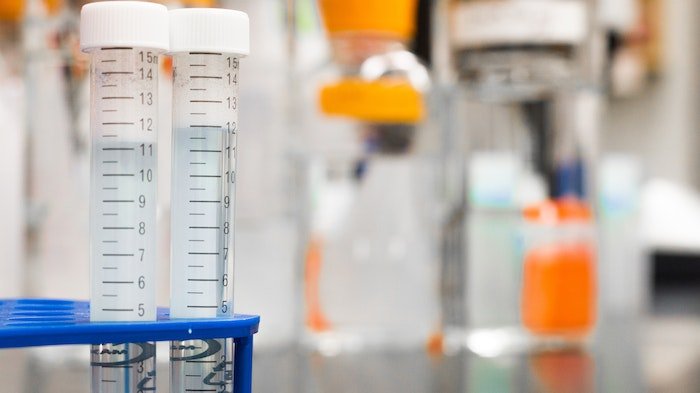How long does codeine stay in your system?
Codeine is a drug within the opioid family most commonly prescribed as a painkiller – often in cases where other painkillers such as paracetamol, ibuprofen, and aspirin are not enough to manage the individual’s pain levels.
This could be for moderate pain to severe pain levels.
Codeine works by acting in the body’s central nervous system (CNS) and the brain.
Within these areas it blocks the pain receptors, reducing the sensation of pain in the individual consuming the drug, as well as reducing their general anxiety and stress surrounding the pain.
When prescribed, codeine can come in many forms including tablets, liquids, and injections. However, injections of codeine are generally only used within a hospital environment due to the specialised and professional manner required for administration.
Codeine can also be used, in some cases, to treat diarrhoea. This is why some of the common side effects include constipation, nausea (feeling sick), and feeling sleepy.
Addiction (or a substance use disorder) is also possible when consuming codeine regularly to deal with pain as it is part of the opioid family of substances.
This is why it is important to monitor codeine usage and have a solid plan in place to deal with withdrawal when the course of pain management has been finished.
To learn more about how long codeine stays in your system, give our team a call on 0800 088 66 86
What Is Codeine Used For?

Codeine is used in many specific cases.
This includes situations such as recovering after surgery, after a significant injury, and also in some cases of long-term pain management.
As mentioned previously, in these cases individuals may not have reacted as well to other painkillers such as paracetamol, ibuprofen, and aspirin, or they may not have been enough to deal with the individual’s pain levels.
Codeine can be bought over the counter in lower doses i.e., combined with other drugs such as paracetamol (also known as co-codamol), aspirin (also known as co-codaprin), or ibuprofen (also known as Nurofen Plus).
In some individual cases, it can also be sold as a syrup for the treatment of coughs – often dry and long-term.
Learn more about the uses of codeine by calling us today on 0800 088 66 86
How Long Does It Take to Feel the Effects of Codeine?

In general, most adults who are prescribed codeine are instructed to take a specific number of tablets over a period of 24 hours, with even breaks between doses.
If this is a long-term pain management plan, the individual’s medical professional will organise with them to undergo steps to withdraw from the substance after their prescribed case has been finished.
The quickest way to administer codeine is through injection, as this will affect the individual near instantly – though this method is generally only used in hospital environments with highly trained professionals on hand.
Other methods, such as tablets and liquids, can take a little longer to take effect. This can be anywhere from 30 to 60 minutes, depending on many individual factors such as metabolism and hydration.
Any prescribed medication should be taken exactly as instructed and, if any issues occur, the individual should contact medical support as soon as possible.
If an individual is struggling with a codeine addiction (or substance use disorder) then it is vital that they seek help as soon as possible.
Get the help you need to fight codeine addiction by calling us today on 0800 088 66 86
Risks of Abuse

With all substances, there is a risk that an individual can become addicted to codeine or develop a physical dependence. This can be due to many factors.
For example, if an individual is struggling with long-term pain, then taking codeine may be one of the only drugs that supports their condition. This means that they may become dependent on the substance, becoming unable to function in their daily life without consuming the substance first.
In addition, the link between a pain-free lifestyle and the consumption of codeine may make it incredibly difficult for individuals to ‘give up’ the substance, especially if it is making significant improvements to their pain levels and quality of life.
However, codeine addictions are addictions that are still often misunderstood, with some studies citing that only 50-75% [1] of establishments in specific countries provide specialised codeine addiction detox sessions, treatment, therapies, and suitable aftercare programmes.
Think you might be suffering from codeine addiction? Talk it over with our experts on 0800 088 66 86
Will Codeine Show Up on a Drug Test?

Depending on what type of drug test an individual may be subject to, codeine may be detectable within their urine, saliva, blood and hair.
In some fields and some career paths, employers may enforce regular drug tests on their employees to ensure their health and well-being. This is especially true in the army, for example, where regular drug tests are a well-known part of military routine.
Though testing for codeine may not always be relevant in some drug testing, it is important when employers are testing for other substances such as cocaine, heroin or cannabis.
Learn all about how codeine can be detected by giving us a call on 0800 088 66 86
How Long is Codeine Detectable For?

Though the effects of codeine and other similar painkillers may only last for around 3 to 4 hours, the length of time in which it can be detected in the body may be far longer depending on the type of test used.
Most commonly, there are 4 types of drug tests that are put into place when testing for drugs including codeine:
- Urine tests – a sample of urine is taken then a chemical is added, or a dipstick is used to determine the traces of substances that may be present.
- Saliva tests – the individual may be asked to stick out their tongue and a swab is taken. This is then analysed to determine which drugs may be present. This is commonly used at roadside tests where the influence of drugs can be a risk to life.
- Blood tests – a sample of the individual’s blood is taken before being analysed. In the case of blood tests, this is often done in a lab – sometimes an external location where the sample is taken to.
- Hair follicle tests – a sample (often a strand) of hair is taken from the individual before being analysed using specialised equipment to determine if there are any traces of substances. This type of test can detect traces of substances for the longest period of time after the substance has been consumed.
How long is codeine detectable in urine?
Through a urine test, an individual who has consumed codeine may show traces from anywhere between 1 to 3 days after their last consumption.
Some tests may show traces of codeine for up to 7 days, depending on their speciality and sensitivity.
A urine test is very common, being used for the detection of many drugs, issues, and infections within the body.
This is due to the lack of specialised equipment required as well as the lack of invasion that this method requires.
This makes it a cheap and easy method for medical professionals, as well as being quick and relatively reliable.
How long does codeine show up in saliva?
This is probably the least common method of testing for codeine in an individual’s system due to the high sensitivity that is required of the equipment.
Unless the individual has consumed large quantities of codeine in a period of time very close to when they underwent the saliva drug tests, the results are likely to be inconclusive.
In some studies, [2] however, it has been shown that codeine can be detected in saliva for up to 7 hours or more in some instances.
This is why saliva tests are not commonly used among medical professionals testing for codeine consumption, and it is far more common to see other tests put into place such as those mentioned previously and going forward.

How long does codeine stay in the blood?
Codeine has a short half-life, meaning that the amount of the substance present in the body is likely to decrease regularly and rapidly over a short period of time.
This means that, although the blood is one of the key transmitters of substances such as codeine around the body, detection times of codeine within the blood itself are generally very unreliable and hard to catch within a short period of time.
Some tests can show that codeine has been present in the body for up to 2 to 4 hours, though this is one of the shortest periods of time to detect substance consumption.
In addition, this form of testing is also more likely to occur in a lab setting, meaning that it is often more expensive, more time-consuming, and therefore less reliable in general than other methods of testing.
It is also a highly invasive method of obtaining a sample from an individual.
How long is codeine detectable in hair?
Hair follicle tests (or hair tests) are not as commonly thought of as some of the other methods of drug testing, but it is one of the most reliable and provides the longest period of time in which an individual can be tested for different substances.
One study showed [3] that codeine could be detected in hair strands for up to 10 weeks, though this heavily depends on the size of the dose of codeine that the individual consumed, as well as many other factors.
In general, hair follicle testing is one of the most reliable and long-term solutions for drug testing, though it can be considered invasive for some individuals, and others may be more troubled by the idea of giving a sample of hair than others.
If you’re worried about codeine showing up on a drugs test, talk to our team on 0800 088 66 86
What factors determine how long codeine stays in the body?

Though the previous subheadings have outlined the key ways in which codeine may be detected in the body, these quoted times are only averages and the true amount of time that codeine can be detected in an individual’s body will greatly differ from one person to the next.
Some of the most influential factors when it comes to the life of codeine within the body are listed below:
- Quantity of codeine consumed
- Individual’s age
- Individual’s height and weight
- Individual’s metabolic rate
- Liver health/liver disease
- Kidney health/kidney disease
- Any additional medication consumed with codeine
- Individual’s genetics
Based on the factors above, not every individual will process codeine in the same way, meaning that it may be present in the body of one individual for a longer period of time than another’s.
For help beating codeine at a drug and alcohol rehab near you, call our team on 0800 088 66 86
Risk of Codeine Overdose

In many cases, individuals who consume codeine are doing so under professional instruction – often for pain management schemes, after surgery or after significant injury.
However, there are some individuals – either those who may be addicted or those who are taking codeine recreationally for the first time – who can risk an overdose in some instances.
This is when an individual consumes more of the substance than their body can process, leading to dangerous and often life-threatening consequences.
Some studies suggest [4] that accidental overdoses account for a higher percentage of codeine-related overdose deaths than intentional overdoses (48.8% compared to 34.7%), showing the dangers of codeine misuse, but also highlighting the dangers of mixing substances with codeine – this was found in 83.7% of codeine-related overdose deaths.
Medical help should always be sought if you suspect that someone you know, or yourself, may be suffering from an overdose.
Don’t take the risk of a codeine overdose – call our experts on 0800 088 66 86
Benefits of Codeine Addiction Treatment

By entering codeine addiction treatment through Rehab Recovery, individuals will receive support for their addiction in three stages:
- Detoxification – this is where the individual will withdraw from codeine (with medical supervision and intervention if required) and prepare physically for the future of their treatment programme. This removes the harmful buildup of toxins and chemicals in their body and is an essential stage before progressing to future therapies and/or treatments.
- Therapy/rehabilitation – this is where the individual will experience different treatments and therapies that are appropriate for their experiences of codeine abuse and addiction and will help them maintain long-term sobriety with their own personally developed coping mechanisms. There are countless different treatment options for individuals struggling with codeine addictions and its associated issues.
- Aftercare – this refers to any further support and learning that an individual may access after the bulk of their treatment as a way of maintaining their progress, motivation and attitude toward the remainder of their recovery journey.
Experience codeine treatment for yourself at a drug and alcohol rehab by calling our team on 0800 088 66 86
Getting Help for Codeine Abuse and Addiction

To speak to someone today about a codeine addiction that you or someone you know may be struggling with, get in contact with Rehab Recovery today.
We are a friendly and professional referral company, working toward offering appropriate, efficient and suitable rehabilitative care to anyone who needs it, no matter their background or situation.
To learn more about codeine addictions, getting help, and taking the next steps, take a look at some of our other webpages (including our blog – with regular specialised topics of discussion) or get in touch through our addiction support hotline on 0800 088 66 86 today.
References
[1] https://researchonline.ljmu.ac.uk/id/eprint/7671/
[2] https://pubmed.ncbi.nlm.nih.gov/12194925/




